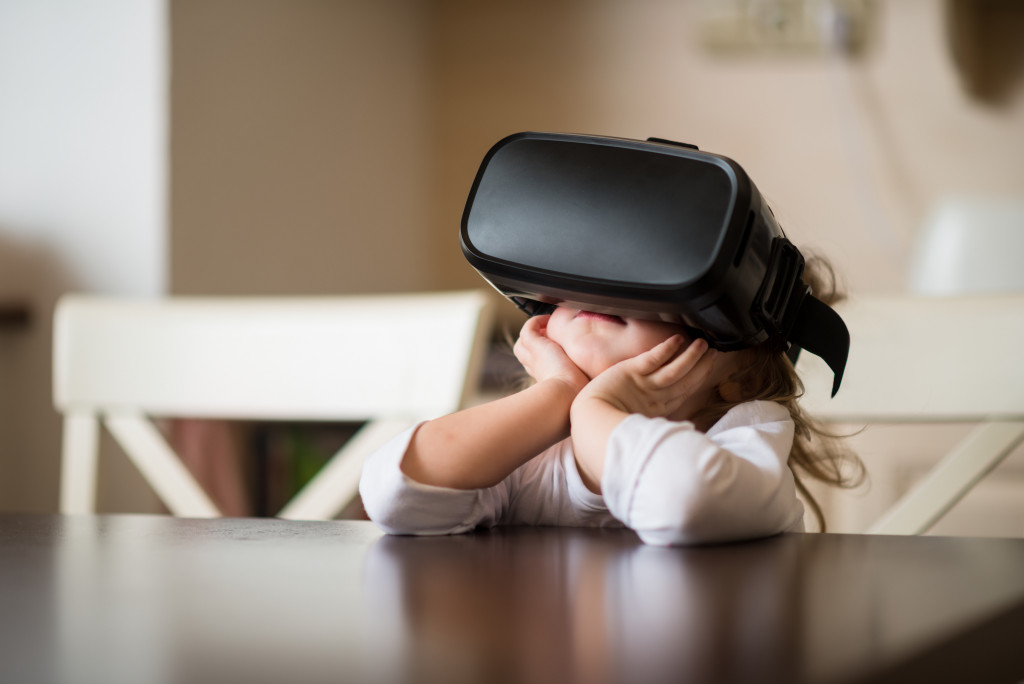Technology has been shaping education and learning in unimaginable ways. Today, learning has shifted online, and both teachers and students alike are developing different strategies to cope and succeed. In recent years, technology in education has become a large part of the changes in the curriculum and knowledge acquisition. Let’s talk more about two heavyweights among the technological trends in education: VR and 3D printing.
Virtual Reality (VR)
Virtual reality refers to a three-dimensional image or environment generated by a computer. It has life-like and interactive elements that a person can gain access to using specialized electronic gear and equipment. It makes use of programs to simulate objects, animals, people, weather, and more.
The term was developed in the 1980s while Jaron Lanier was researching the technology and developing various gear required to experience it. But it’s not the first time the idea of environment simulation was conceived. The earliest record of a simulated environment dates back to 1947.
Thomas Goldsmith and Estle Mann created a simulation involving firing a missile. There are many other instances, research, and programs that aimed to imitate real-life situations in various environments and scenarios.
The concept of virtual reality is popular in the gaming and cinema industries. It’s been featured in stories, movies, and games and has been a curious topic for science and fiction. But has it gained enough traction to become an effective teaching and learning tool? Let’s find out.
Studies have shown that virtual reality is beneficial to education by improving the means and method of teaching and learning. It promotes the student-centered approach, where learners are allowed to take the wheel. This way, they learn initiative as well as take accountability and responsibility for meeting learning objectives.
Virtual reality is interactive, engaging, and immersive. It lets students and teachers learn through experience instead of through the traditional methods of writing and reading. For example, instead of reading stories, students can be part of the story by witnessing it through virtual reality.
The extent of senses they have to use can inspire students more than traditional teaching styles or any form of multimedia can. Virtual reality has a powerful impact because it engages all senses, and it is incredibly visual and auditory. Instead of just reading about the different organs of a body, students can see hearts beat and blood flow.
Virtual reality can be a substitute for field trips. This way, students can visit museums, go underwater, or go to mountains without physically leaving their homes or the learning center. It’s more practical, cost-effective, and safer, too.
It’s this life-like approach to teaching objectives that exposes the children to high-quality learning. The immersive experience can help learners improve their imagination, creativity, and logical thinking. Studies have shown that virtual reality increases peer-to-peer interaction as learners come together to collaborate, improve interpersonal skills through teamwork, tests, and games. They’re also more eager to talk about class activities and lessons done in VR.
3D Printing

3D printing is also called additive manufacturing. It’s a process that creates three-dimensional objects using a model in a computer-aided design (CAD). A software known as a slicer processes the model or design in a series of layers and compiles them into a body of instruction, otherwise known as a G-code. Each 3D printer has different G-codes.
Today, we can use 3D printers and various materials, such as rubber, metal, and plastic.
In the classroom, 3D printing is used to produce various objects. For example, we can make objects, people, and even scenarios that have historical significance. Students can also watch as their artwork, designs, and projects come to life through 3D printing. In addition, they can learn geography by printing out population maps, demographics, and topographies.
The best part is that the sciences can be beefed up in ways never seen before. Today, students have more access to 3D figures of cells, organisms, organs, and animals. They can touch and feel structures of living components conveniently.
By investing time and resources in a reliable 3D additive manufacturing company, schools can benefit from the advantages of 3D printing. For starters, it’s exhilarating to see 3D versions of things we only read in books or watch in the movies. This technology engages multiple senses, unique visuals, and touch.
The various shapes, colors, and textures engage our imagination and concentration. This makes learning much more exciting than simply reading about different topics. It also transforms the curriculum by turning students into active learners instead of just being passive consumers of information.
The new possibilities of learning are endless with this technology. In the first place, it gives students access to knowledge and experiences that they could only imagine before. Take, for example, the parts of a living animal cell. Seeing it in illustrations is excellent, but students learn more when they can touch the different organelles. It also engages emotion as students become inspired to learn more.
Studies have shown that 3D printing promotes creative and problem-solving skills. They enhance imagination as well as logical mental processes. Today, students can participate more in problem-solving formulas by creating and seeing their 3D versions.
Technology has made learning so much more straightforward and complex at the same time. Now, we have more options to teach and to learn. Virtual reality and 3D printing have made school a new experience — and it’s only going to get better.


